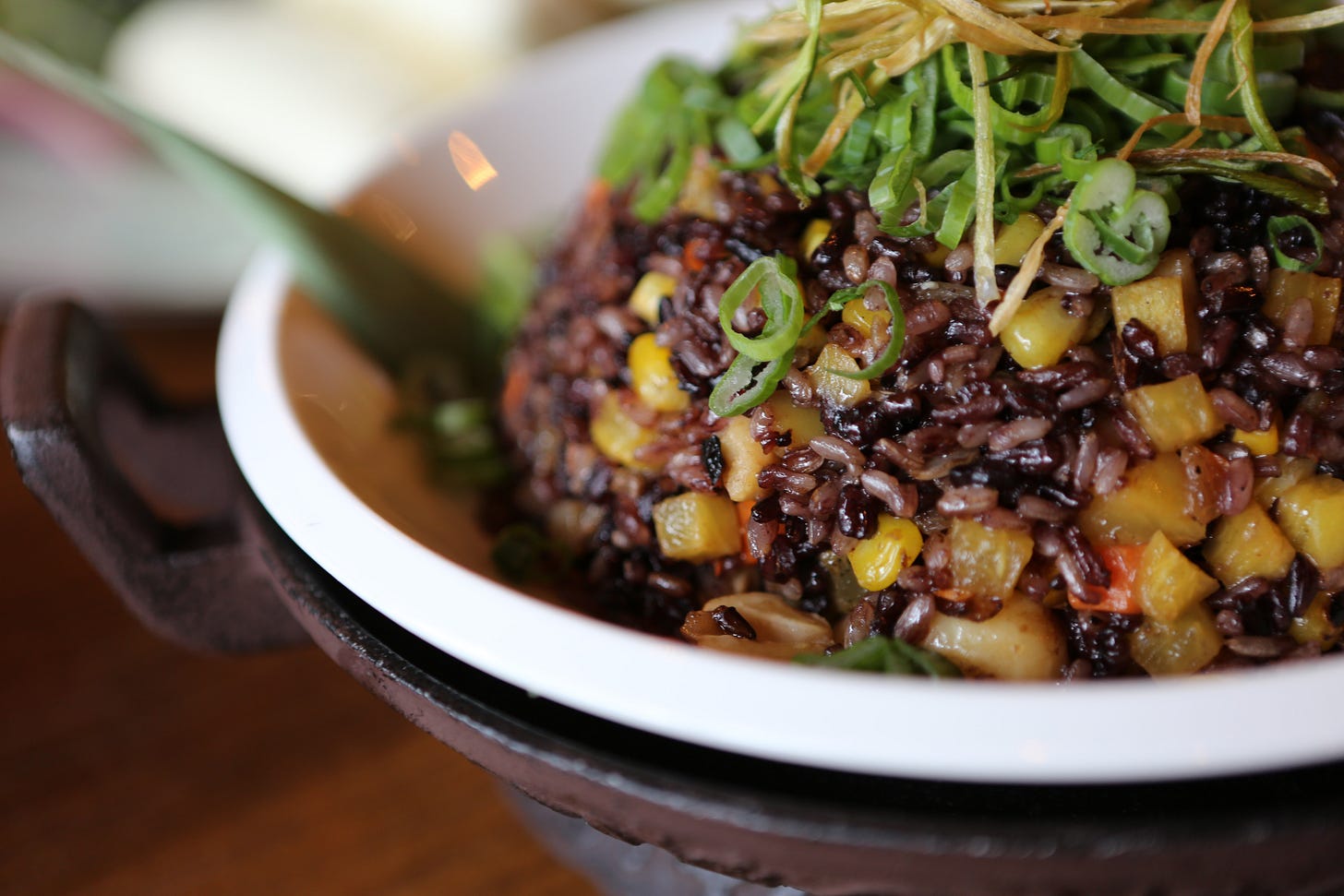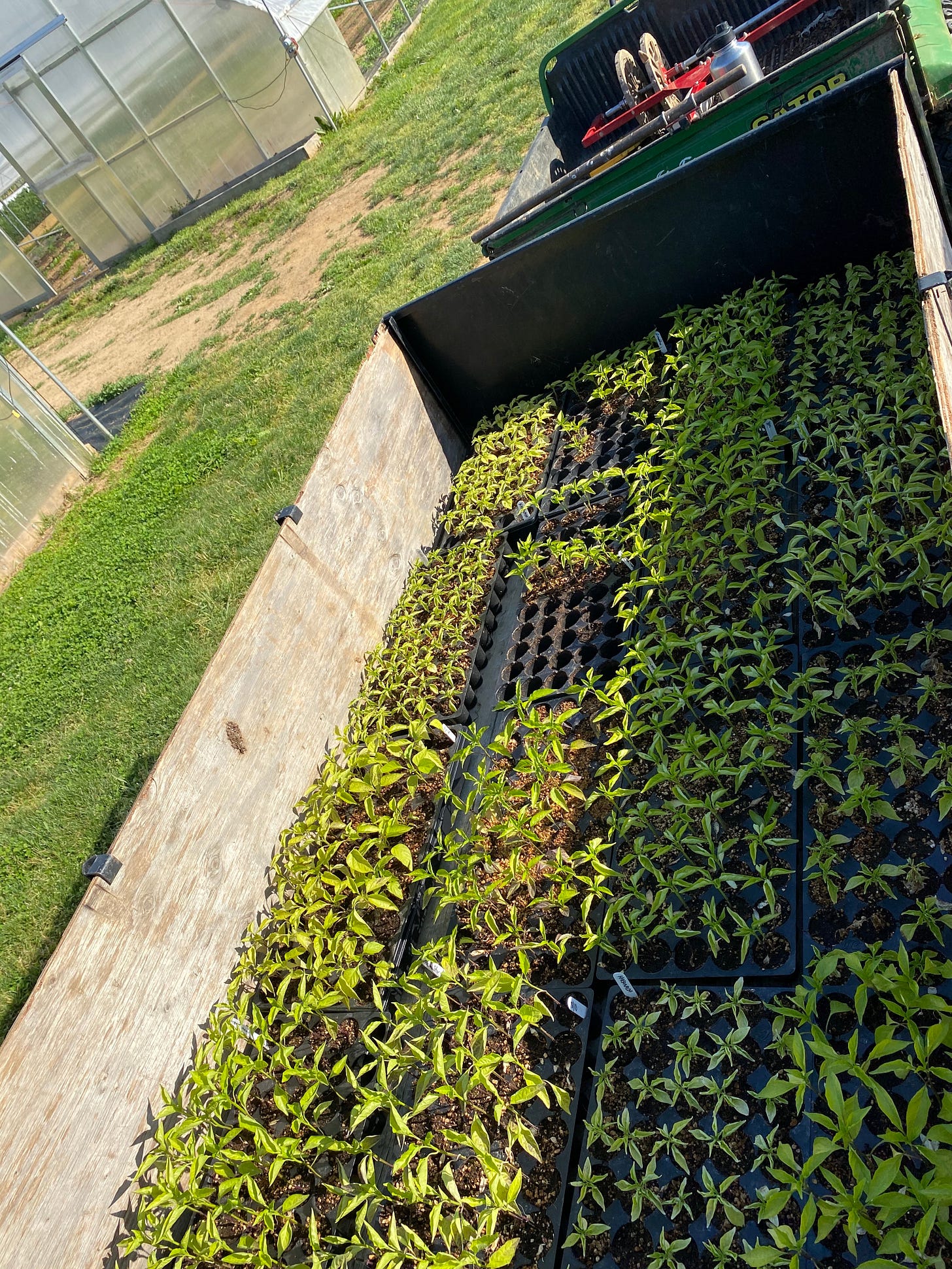Should governments measure (and reduce) the climate impact of food purchases?
DC just became the first jurisdiction in the country that will track and cut emissions from foods served in schools, prisons, and more.
Last week, Washington DC’s city government made a local move with national implications.
Members of the DC Council unanimously passed a bill that will make the District the first municipality (AKA city or state) to measure and reduce greenhouse gas emissions associated with the food it purchases. The Green Food Purchasing Act sets a goal of cutting those emissions 25 percent by 2030, and it will apply to food served in schools, prisons, and other public facilities.
“Our purchasing power is perhaps one of the best underutilized tools we have in the fight against climate change, and the passage of the Green Food Purchasing Act ensures that every step of the food procurement process within our management—every dollar the District government spends—will be working toward our climate goals and measurable reductions in food-related greenhouse gas emissions,” Councilmember Mary Cheh said in a press release. Cheh introduced the bill in 2020, and a hearing was held in December. It faced no opposition and passed unanimously, with support from local and national climate and food organizations.
Many of those groups have been pushing to change the kinds of food big institutions buy for a long time. The idea is simple: While we tend to think more about our own dinner tables and takeout habits, a hell of a lot of meals are served in public gathering places like university dining halls and hospital cafeterias. So if those places buy better food, a lot of money will shift towards the producers growing that food pretty quickly.
It’s the thinking behind initiatives like the Good Food Purchasing Program, which works with school districts and other institutions to shift purchases based on multiple metrics, including animal welfare, local economies, environmental sustainability, and worker rights. And many states have farm-to-institution purchasing incentives that reward schools for buying local produce.
But the DC law is the first to specifically mandate the tracking and reduction of greenhouse gas emissions associated with food. That feels like a significant development, so I talked to one of the advocates pushing for the legislation about the potential and limitations.
Unwrapped
Chloe Waterman is the Climate-Friendly Food Program Manager at Friends of the Earth. Waterman said she began working on the idea to “leverage public food purchasing to align with climate and public health goals by reducing emissions associated with those foods” about three years ago.
“Counties and cities can have jurisdiction over food purchasing for jail systems, public health, senior meals, summer meals for students—some of them even have jurisdiction over stadiums and conference centers,” she said. “That is a lot of food, and that's a lot of dollars they're spending, and so that's a lot of potential to redirect those dollars towards food that aligns with their values.”
Here’s what the Green Food Purchasing Act actually does: It directs the city government to adopt a methodology to track emissions from food purchases by January 2022 and then to create “best practices” to start buying foods that reduce those emissions. It then sets targets on a rolling timeline: 10 percent reduction by fiscal year 2025, 18 by 2027, and 25 by 2030.
That’s in line with efforts in the private sector, Waterman said, where the World Resources Institute’s Cool Food Pledge is working with companies who want to voluntarily work towards that same goal. World Resources Institute also already has a tracking methodology and tools for implementation that the District can pull from as it begins to develop a system.
Of course, greenhouse gas emissions are only one factor when it comes to determining a food’s sustainability. Food production also impacts workers, animals, water, and health. Without considering nutrition at all, for example, an agency could conceivably replace pork with sugar to meet emissions reduction goals. That’s clearly not what advocates are pushing for.
“Just from a tactical point of view, we have to focus on certain aspects,” Waterman said. “But our view is that you have to look at this holistically and incorporate as many of those values and considerations as you can. The mechanism for doing that with the Green Food Purchasing Act is really in those ‘best practices,’ and that's why it includes a new role for someone to implement them.” The city will have to fund that role in an upcoming budget for the legislation to be successfully implemented, but Waterman believes that is almost certain to happen.
And again, she thinks groundwork has been laid by others that can inform the law’s implementation. “There's a lot of work from private institutions that have done this to really think through those trade-offs and make sure that we're reducing emissions but also addressing nutrition and other environmental aspects,” she said.
So will other cities and states jump on board if the law is a huge success?
That remains to be seen. While the DC legislation had strong support from the get-go, efforts to get climate-focused food laws passed in states like Maryland previously failed due to push back from agriculture groups. For example, the National Cattlemen’s Beef Association has lobbied against greenhouse gas tracking laws because they will lead to some reductions in meat in favor of plant-based foods. The District was somewhat of an easy sell because while agriculture lobbyists are busy on Capitol Hill, they don’t have a lot of presence in city government.
Still, it seems likely, at least, that the bill will inspire efforts at similar legislation elsewhere. And as cities, states, and the federal government all speed up efforts to combat climate change, it introduces one new pathway that may be used to put taxpayer dollars towards more climate-friendly foods.
Wrapped up to go
*DC is the first municipality in the country to pass a law that will require it to track and reduce greenhouse gas emissions from the foods it buys.
*Greenhouse gas emissions targets on their own don’t account for all of the impacts of food production, but given the scale of the climate crisis, they’re one important metric.
*There will be more efforts to pass similar laws like this in cities and states across the country, but opposition is likely.
Still hungry?
Sowing in St. Louis. On The Farm Report, I interviewed farmer Tyrean Lewis about why and how he started Heru Urban Farming to bring fresh fruits and vegetables to food apartheid communities in St. Louis, Missouri. Listen on Heritage Radio Network, here, or look for episode 420: “Urban Farming in St. Louis” wherever you listen to podcasts.
Currently devouring
“Windfall” is the wrong word…and other issues. On Sunday, The New York Times put the USDA’s historic debt relief program for Black farmers on the cover of the paper. But instead of highlighting how farmers who have suffered from a legacy of discrimination are benefiting from the program or looking at the scale of the spending vs. other USDA programs, the reporter chose to focus on a group of “conservative white farmers who say they are being unfairly excluded because of their race.” To be fair, the farmer Shade Lewis is prominently featured, but his story is quickly used to set up the supposed controversy. I have many issues with the framing of this story that I think are worth articulating.
First, “windfall.” Lewis got a $200,000 farm loan forgiven, and the entire funding for debt relief is $4 billion. That sounds like a lot of money, until you put it into context. President Trump sent $26 billion in COVID relief money to farmers, and 0.1 percent went to Black farmers (who make up 1.3 percent of farmers). And pandemic relief aside, every single year tens of billions of tax dollars are sent to commodity farmers. The vast majority goes to the biggest farms, most of which are owned by white farmers.
It also seems to be a serious overstatement to say the issue is “dividing rural America.” The program is historic but small, and in most places, there will be very few farmers who benefit. I don’t doubt the reporter found many people who are angry about it, but it’s a disservice to readers to make grand pronouncements about how divided the country is. Here’s some feedback, for example, from a smart dairy farmer in upstate New York:

Actually eating
Nothing to eat here (yet), but I liked this photo from this week the most, so I’m sharing it anyway. We planted all these beautiful baby pepper plants—Carmen, Lunchbox, and Habanadas, oh my!—in the field at Karma Farm.
In less exciting news, some sort of critter ate ALL the peas and lettuces I planted in pots at my house. Growing food can be very frustrating.
Let’s be friends
Follow me on Twitter and Instagram to continue the conversation. See you next week!





